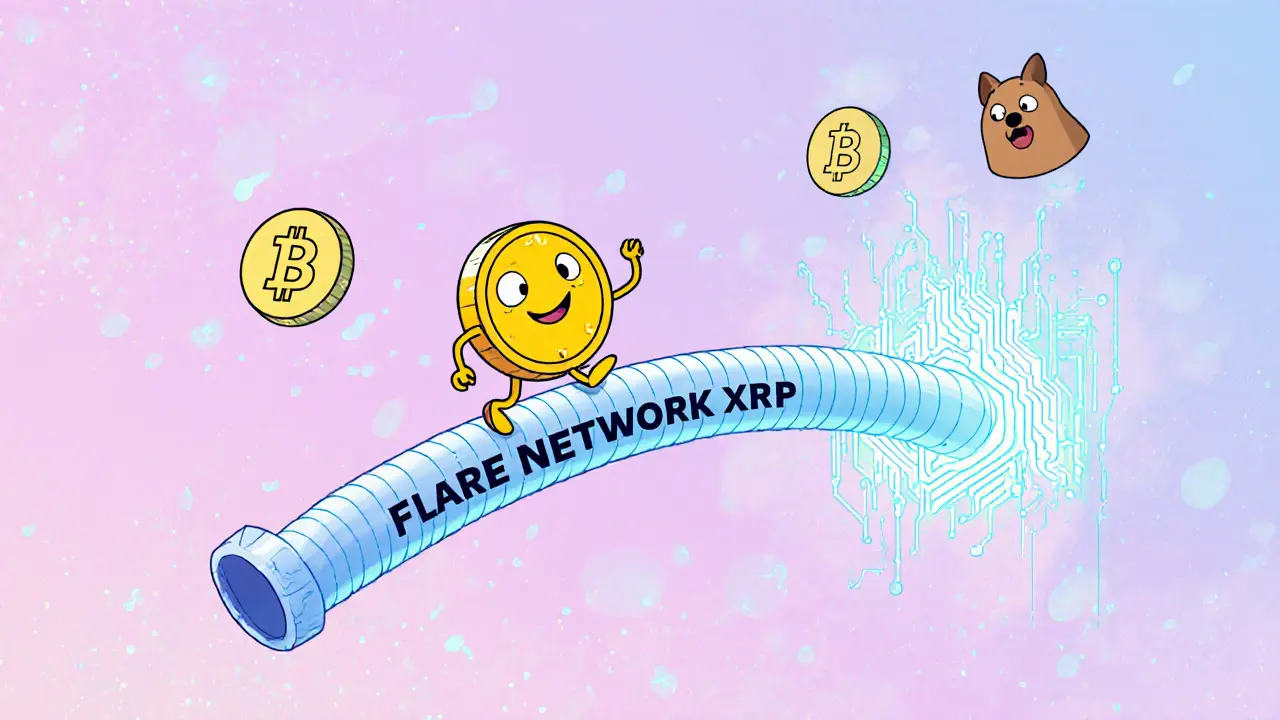Flare Network: What It Is and Why It Matters in Web3
When you hear Flare Network, a blockchain that adds smart contract functionality to networks like Bitcoin and XRP Ledger without altering their original code. It's not another Ethereum clone—it’s a bridge that lets you run complex apps on blockchains that were never meant for them. Most blockchains are isolated. Bitcoin can’t do DeFi. XRP can’t hold NFTs. Flare changes that by using a secure, decentralized way to read data from these networks and turn it into usable information for smart contracts.
At its core, Flare relies on Flare Token (FLR), the native currency used to pay for network operations, secure the system through staking, and reward participants who verify data from external chains. It’s also the fuel for Time Series Oracle (TSO), a system that pulls real-time, tamper-proof data from Bitcoin, Ethereum, and others to feed into Flare’s smart contracts. Without TSO, Flare wouldn’t know what’s happening on Bitcoin—like when a transaction confirms or a wallet balance changes. That’s how it enables things like lending against Bitcoin without moving it off the chain.
Flare isn’t just theory. It’s already powering real tools. Projects like Flare Network’s own Spark protocol let users earn yield on their XRP by locking it in a smart contract. Others are building decentralized identity, cross-chain lending, and even Bitcoin-backed stablecoins—all without touching Bitcoin’s code. That’s the big win: innovation without disruption.
What makes Flare different from other interoperability projects? Most try to connect chains by creating new bridges or wrappers. Flare doesn’t move assets. It reads them. That means less risk, fewer points of failure, and no need to trust third-party custodians. If Bitcoin’s network stays secure, Flare’s data stays secure too.
And while Ethereum dominates smart contracts, Flare targets the overlooked. It’s for people who hold Bitcoin or XRP and want more from their coins—without selling them. It’s for developers tired of being locked into one ecosystem. And it’s for users who want DeFi without the complexity of wrapping assets.
Below, you’ll find real reviews, breakdowns, and warnings about what’s actually happening on Flare. Some posts cover how to claim FLR tokens from past airdrops. Others explain how the network’s consensus works—or why it’s still early, and risky. There’s no fluff. Just what you need to know before you interact with it.
26 Aug
2025
Flare (FLR) is a blockchain that brings smart contracts to coins like XRP and Dogecoin. Learn how it works, what FLR is used for, its market status, and why Bitcoin integration in 2025 could change everything.
